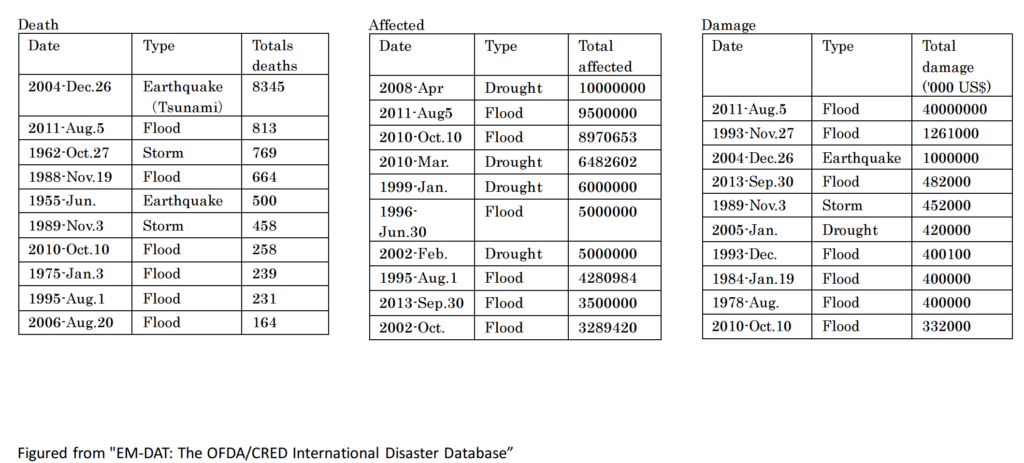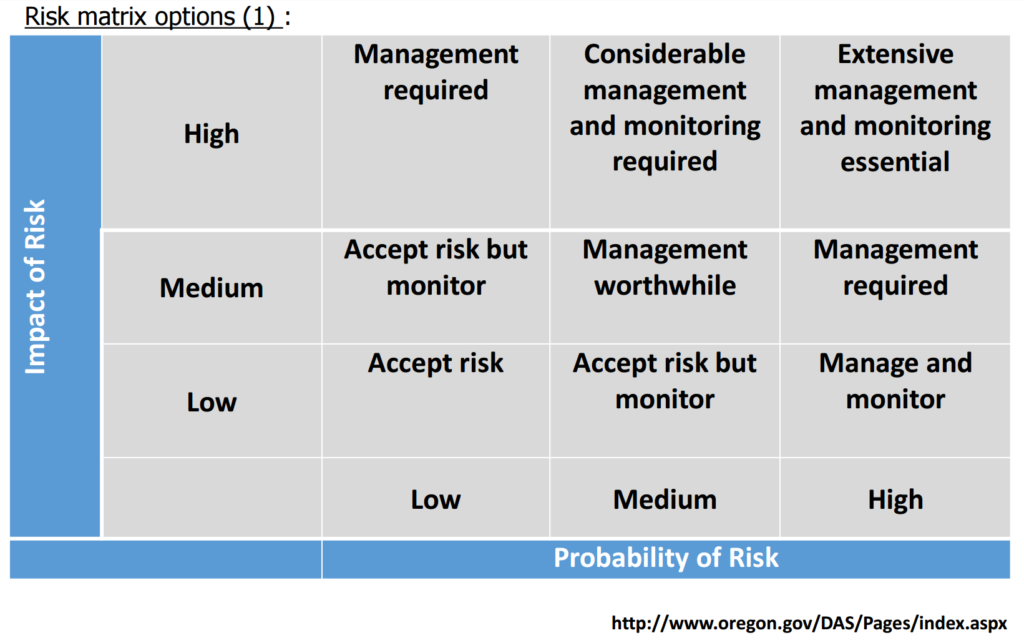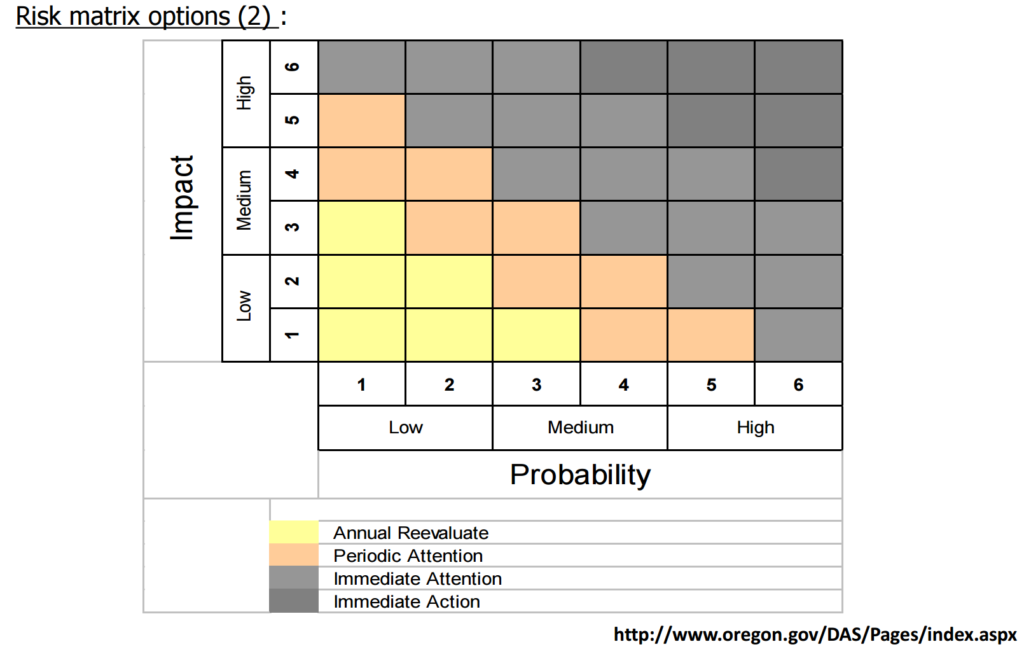Day_18 mentioned “More must be done to fight climate change” (Bangkok Post)
https://disasterresearchnotes.site/archives/2304
The national risk assessment mapping in Thailand is briefly explained below.
Table 1 Disaster data in Thailand

A target period of these EM-DAT data is from 1900 to 2014. However, the large numbers of death, affected people, and damage cost caused by natural disasters are all after 1970s as shown in Table 1. The data clarify the 2004 Indian Ocean Tsunami and the 2011 Chao Phraya river flood disasters are so influential in Thailand.

Figure 1 National Risk Assessment Mapping in Thailand
Using EM-DAT data of Thailand (1900-2014), Figure 1 was created. These risk assessment mapping (Frequency-Impact by each damage type) is very simple, but we can easily grasp the whole pictures of the risks.
To evaluate each risk, the following risk matrix options are useful.

Figure 2 Risk matrix options (1)

Figure 3 Risk matrix options (2)
It is clear that the flood is the most countermeasures required disaster in Thailand from the Figure1. By using Figure 2 and 3, for example, we can recognize the extensive management and monitoring are essential and immediate action must be taken against the floods.
The above explanations are very rough. Detailed explanations will be discussed later.
The above was already published with explanations as a report for the Japanese Association for Earthquake and Engineering (JAEE).







I am so sad for the victims. And keep the great job for all the national disaster rescue.
Thank you so much for your kind note. I really appreciate that. Yes, I will do this step by step. Sorry for my long silence.
I’m amazed, I must say. Rarely do I come across a
blog that’s both equally educative and interesting, and let me tell you,
you have hit the nail on the head. The issue is something that too
few men and women are speaking intelligently about. I’m very happy I found this in my search for something regarding this.
Thank you for the comment. Your comment encourages me to do disaster research going on. Thank you so much.
Can not understand about that graphic
Kindly refer to the following conference paper. Thanx.
https://www.researchgate.net/publication/318446964_Natural_Disasters_and_Disaster_Management_in_Thailand_Status_Risks_and_Trends
Thank you for the terrific post
I appreciate your kind comment which encourages me to do this work.
Thanks for sharіng your thoughts. I truⅼy appreciаte youhr efforts and I
will be waiting for your further write ups thank
you once again. http://b.bdwd.vip/comment/html/?68759.html
Thank you for your kind advice. I will do my best. Thank you.
Your method of describing the whole thing in this post is actually good, all be able to
without difficulty be aware of it, Thanks a lot.
Thank you for your kind words. I appreciate it.
I was recommended this web site by my cousin. I’m not sure whether this post is
written by him as nobody else know such detailed about my trouble.
You are amazing! Thanks!
Thank you so much.
Saved as a favorite, I love your site!
Thank you.
look so good, this inspires. can you explain further how the criteria used in choosing the best place for the area?
Thank you for the question. I was wondering if you could elaborate on your question for me to answer properly.